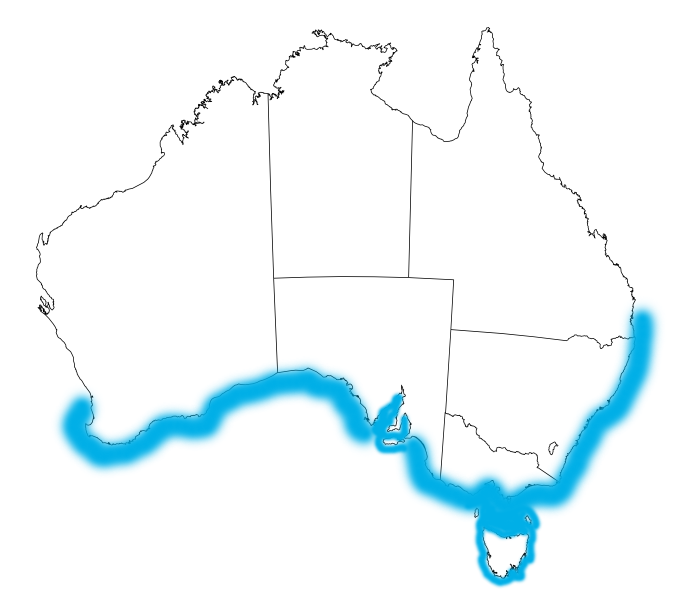Summary
Physical Description
Ecology
Life History & Behaviour
Locomotion
Predator Avoidance Strategies
Reproduction & Development
Substrate Preference Experiment
Anatomy & Physiology
Nervous System
Sensory Systems
Integumentary System
Buoyancy Control Systems
Other Physiological Systems
Evolution & Systematics
Biogeographic Distribution
Conservation & Threats
References & Links | Biogeographic Distribution
Cephalopods are found in waters from the Arctic to the Antarctic, in all the world’s oceans and seas except for the Baltic and Black Seas. They are almost exclusively marine, with no species found in freshwater and only a few species inhabiting estuarine environments. Cephalopods have filled most niches in the oceans, and can be found from the benthos of coastal and open waters, throughout the water column at all depths and have even been known to visit hydrothermal vents (Nixon and Young 2003).
There are around eight species of Idiosepius and they are found in Pacific coastal waters from Japan through south-east Asia, the northern, eastern and southern coasts of Australia as well as in waters off southern Africa (Nixon and Young 2003). The range of I. notoides extends from southern Queensland, south along the east coast of Australia to Tasmanian coastal waters, and west along the southern coasts of Victoria, South Australia and Western Australia (Norman and Reid 2000).

|
|
The geographic range of I. notoides, indicated in blue (indicative only, not to scale).
Illustration by Samantha Reynolds with reference to Norman and Reid (2000).
|
|
|